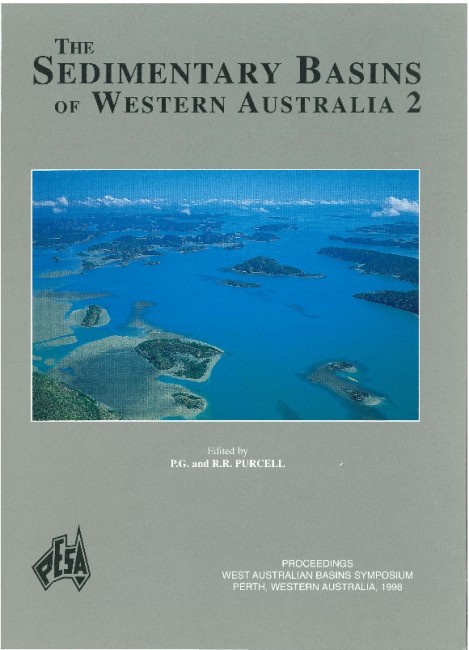Publication Name: The Sedimentary Basins of WA
Authors: D. A. Seeburger, N. W. D. Miller, G. J. Beacher, J. P. Schulz-Rojahn and J. P. Popek
Publication Volume: 2
Date Published: December 1998
Number of Pages: 23
Reference Type: Book Section
Abstract:
The Mardie Greensand is a thin ( +1- 18 m) unit in the Thevenard Island area. Reservoirs are found almost solely in the more grain-rich glauconitic sands of Lower M. australis age. Production is from an unconventional reservoir, with overall low resistivity, a low resistivity contrast between productive and nonproductive, zones and complex mineralogy. Accurate reservoir characterisation requires detailed core, wireline log, mud log, and production studies which address the key issues of pore size distribution, capillary pressure properties of reservoir andnonreservoir rock, mineralogy, and facies distribution. Reservoir rocks have a strongly bimodal pore size distribution: the larger peak, associated with intergranular porosity; the smaller peak, primarily associated with glauconite intrapelletal porosity and generally not hydrocarbon-bearing. Effective reservoirs have interconnected intergranular porosity, producing clean oil in spite of low resistivity and calculated water saturations above 50%. Water saturation in the intergranular 'productive porosity' (pore throat radius less than 0.5 f.!m) is very low, consistent with water-free oil production. The large volumes of immobile water in the intrapelletal pore space provide an electrical current path but do not contribute to flow under normal reservoir conditions. Siderite is found throughout the section, complicating evaluation. Where it occurs as continuous thin units, siderite is interpreted as providing barriers to fluid flow. Field development is through horizontal/high angle wells which are programmed to penetrate the siderite layers, encountering all of the reservoir units while avoiding the underlying Barrow Group sands and the overlying Muderong Shale.
As of December 1997, Thevenard Island area production from the Mardie Greensand was 11 898 BOPD, with less than 100 BWPD from seven wells in Saladin Field. Initial individual well production capability has generally been greater than 2000 BOPD.


